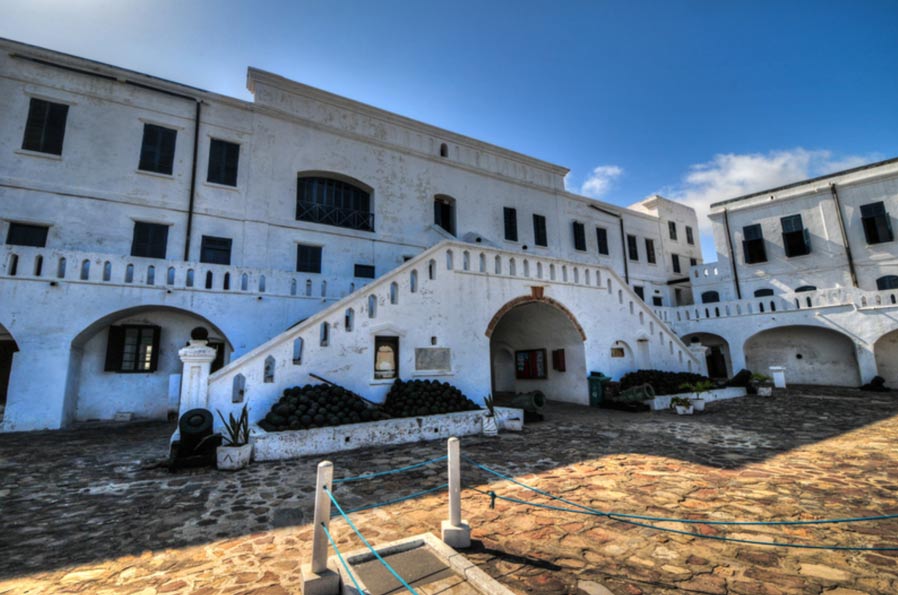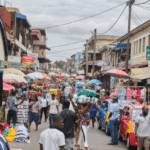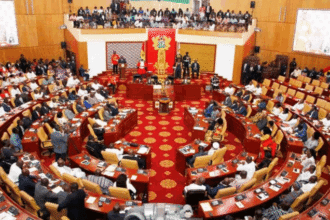The 505-year-old former slave depot is evocative of an important alarming part of Ghana’s history. With space for 1000 slaves, the number of innocent Ghanaians being shipped all over the world is hardly imaginable.
Elmina Castle which was built in 1482 by Portuguese conquerors is one of the best preserved forts along the Ghanaian coast. After first being a camp for weapons and resources such as gold and ivory it became a depot for slaves when the slave trade massively increased towards the end of the 17th century. Sectioned in two parts, it had space for 400 women and 600 men.
Conditions for female slaves
The two women dungeons are located on the left side in the castle, when entering.
Ironically the Dutch, who conquered the Castle in 1637, placed their Church just above the women dungeons where the inmates have been held under unbearable conditions. The women were penned up like animals, with no toilets, excreta and menstrual blood covering the floor, just a little food and water and even less space for each of the women. In addition to the stench caused by the missing toilets the air duct led to the armory, bringing all the toxic damps into the dungeons.
Seeming like this would not be enough torture, the Governor once in a while picked one of the younger slave women to be washed and brought into his chambers so he could take advantage of her. On the way back to the dungeons, the soldiers also raped and abused her. When a woman chose to refuse the rape she was chained up by her ankles and put out in the courtyard, whether sun or rain, for days. After that she had to lift up a 25kg heavy cannonball. Not being successful she would have been flogged.
The last humiliation women locked up in the Elmina Castle had to go through was, when they left the Castle to be deported to Brazil, India or America as on their way to the waiting boats led through a skid which also was the drain.
Conditions for male slaves
The men dungeons are on the right side in the castle, under the bedrooms for the soldiers and with the police training camp in their middle that was built by the British after conquering the Castle in 1872.
The men who were imprisoned here had to live under the same conditions as the women.
Whereas the women have been abused sexually the men exposed to emotional and physical torture by the guards. If one man stood up and fought against this he was put in prison.
Prison in this case does not mean being locked up for a certain time and released afterwards. The so called ‘freedom fighters’ were chained to the wall with absolutely no food or water and only a little light shining through an iron door. They were left there to die, no men was coming out without leaving his life inside these walls. That’s why the guards painted a skull above the entrance.
The prison for white men in comparison had two windows for light and fresh air. Also the soldiers being imprisoned here for misbehavior or refusal to obey orders for example were given water and food and they did leave the prison alive.
Sankofa – Going back to your roots
Even though slave trade was forbidden in 1807 by the British and the Castle is in ownership of the Ghanaians since their independence in 1957 it will forever be a reminder for dark times in our past. To also raise the awareness for this time and the torture thousand of Ghanaians have gone through in 2015 volunteers had themselves being chained and locked up in the dungeons for 72 hours to experience what their ancestors had gone through.
Establishing awareness in people’s minds about the occasion in Elmina Castle is the tour guide’s most important concern when guiding a group of visitors through the Castle. They appeal to the visitor in the beginning and end of each tour to go out and tell their relatives and friends the stories they have heard so that the history will never be forgotten.
By: Sophie Zoe Schreiber














